When it comes to the lunar ritual of moon charging, it’s not always clear skies and smooth sailing, especially when you discover which crystals cannot be charged in the moonlight.
It’s a bit like finding out your favorite superhero is actually allergic to their own cape – a surprising twist in the crystal saga! From the saltiness of halite that disintegrates at the mere mention of rain or running water to the vibrant yet vulnerable amethyst that can lose its shine under extended periods of lunar spotlight, moon charging is a no-go for these delicate beauties.
Instead, these many crystals march to the beat of a different drum, preferring to harness the subtle energy of life’s other elements to set intentions and thrive in the world without moonlight influence.
Which Crystals Cannot Be Charged In Moonlight: Short Summary
Explore why certain crystals would rather sit out the moonlit gala. It’s a celestial scoop that reminds us not all glitters in the moonlight are gold for every crystal, leading us to respect their lunar preferences.
For those crystals not moonstruck, we explore exciting alternatives to moon charging, like soaking up the sun’s rays or indulging in a rejuvenating mineral bath. These methods not only boost the crystals’ power but also connect them to other natural elements, offering a variety of ways to recharge and purify without relying solely on moonlight.

Understanding Charging, The Full Moon, and Why Certain Crystals Cannot Be Charged with The Energies of The Moon
First off, not all crystals are moonstruck lovers. The charging process under the moonlight (one of the very popular methods) isn’t recommended for every gem out there.
It turns out some crystals don’t vibe with the moon’s energy. Other Crystals like amethyst and rose quartz can have a bit of a falling out with the moon, as prolonged exposure might cause them to lose their vibrant hues. It’s like leaving your favorite vinyl record out in the sun – not a good idea!
Now, let’s talk about the full moon – the big kahuna of crystal charging. While most crystals can be charged under the moonlight without any adverse effects, others enjoy staying in the shadows. Some crystals might become over-energized when charged in the moonlight, like drinking too much coffee and bouncing off the walls.
The moon’s light is not just about brightness; it’s a whole mood. Alternative methods like soaking in salt water or basking in sunlight rescue crystals that can’t be charged in moonlight. These methods are like a spa day for your crystals, ensuring they’re cleansed, recharged, and ready to serve your intended purpose without any lunar drama.
Some crystals are more into a low-key lifestyle. They prefer a gentle, indirect touch of artificial light or the earth’s grounding energy. It’s like choosing a quiet evening with a good book over a flashy party under the stars – comfort over glitz.
Remember, charging crystals is an art, not just a ritual. Whether it’s under the sunlight or moonlight or with other stones, it’s all about understanding and respecting each crystal’s unique needs and vibes. So next time you charge your crystals, think of it as a cosmic dance – some like to tango with the moon, while others prefer to waltz with the sun.
The 5 Benefits to Charge a Stone Without Moonlight
- Prevents Environmental Damage to Crystals: Charging crystals away from moonlight, particularly those sensitive to lunar energy like chrysanthemum stone or moonstone, reduces the risk of environmental damage caused by exposure to the elements at night. This method preserves the physical and energetic integrity of the crystals, ensuring they remain potent and unharmed by fluctuating outdoor conditions.
- Customized Energetic Alignment: By charging crystals independently of moonlight, people can focus on setting specific intentions or aligning the crystals with particular energies, such as those for personal growth or creativity. This approach allows for a more targeted and intentional use of the crystals, enhancing their potential in practices like meditation, manifestation, or crystal healing.
- Broadens Charging Techniques and Knowledge: Utilizing alternative charging methods, such as placing crystals on a windowsill to soak in morning light or using the purifying vibrations of a singing bowl, expand one’s knowledge and practice in crystal care. These varied techniques not only cater to different crystals’ needs, like avoiding direct sunlight for amethyst or keeping halite away from moisture, but also people can enrich their understanding of crystal energies and care.
- Inclusive of All Crystal Types: Alternative charging techniques accommodate all types of crystals, including those that cannot be charged in moonlight. This inclusivity ensures that even crystals with specific needs or sensitivities, such as delicate stones or those requiring gentle cleansing, can be successfully and safely energized.
- Flexibility and Convenience in Charging: Charging without moonlight allows people to energize their crystals at any time, irrespective of moon phases or weather conditions. This convenience is particularly beneficial for those who rely on their crystals for daily energy work or spiritual practices or as part of their routine, offering continuous access to charged and ready-to-use crystals.
15 Crystals That Cannot Be Charged In Moonlight
Imagine a world where each crystal, like a unique character in a mystical tale, has its own preferences for recharging its magical powers – some bask in the moons glow, while others don’t get along with moonlight. This intriguing divergence in the crystal kingdom adds a layer of wonder and a touch of practical magic as we learn to align our intentions with the natural affinities of these earthy treasures.
Selenite
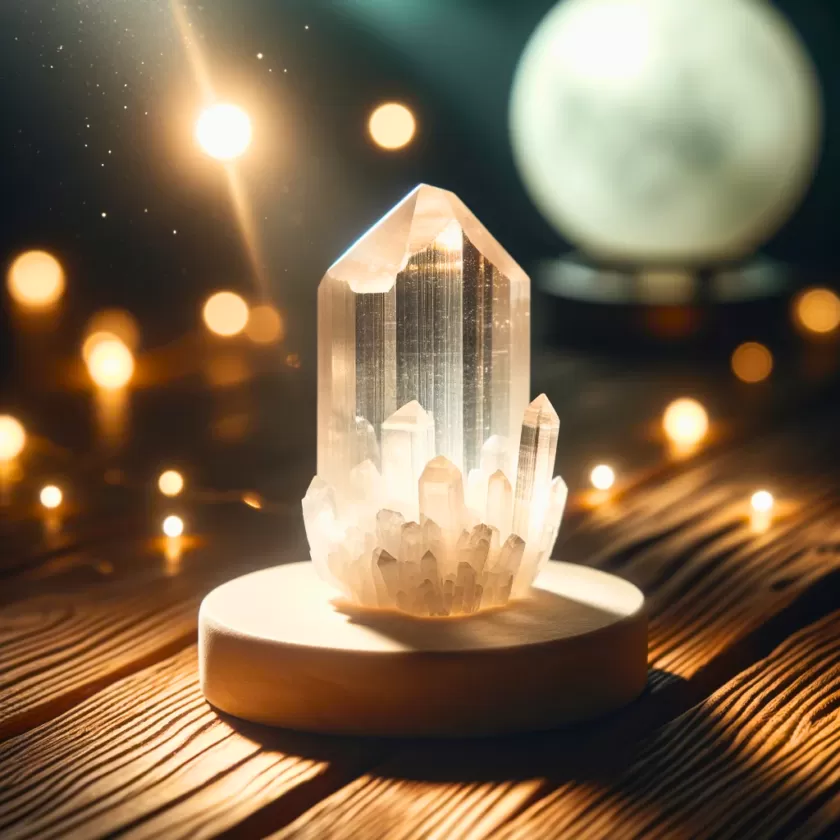
Selenite, known for its ethereal translucence and strong connection to the crown chakra, is susceptible to moisture, which makes moonlight charging risky due to potential dew formation.
As a soft crystal, it can degrade or dissolve when exposed to moisture, undermining its metaphysical properties and structural integrity. Alternative methods, such as placing Selenite on a natural surface or using sound vibrations, are recommended to maintain its energetic potency without the risk of water damage. If Selenite is charged in the moonlight, don’t leave it out for a long period.
Malachite
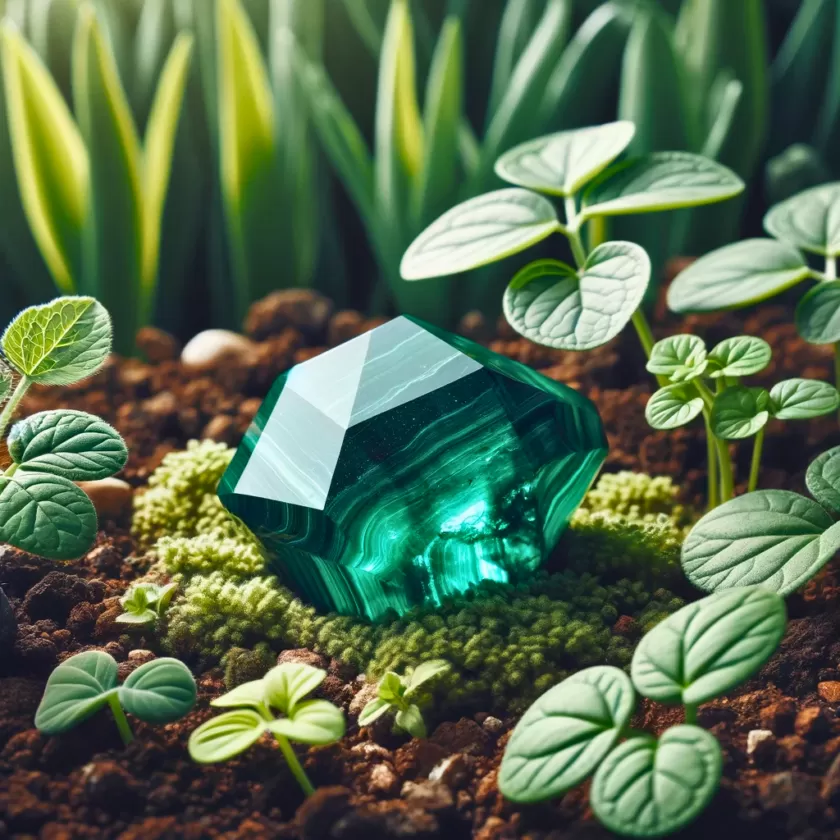
Malachite, characterized by its vibrant green color and swirling patterns, is sensitive to acidic environments and condensation, making it detrimental to moonlight exposure.
This stone can easily lose its shine and suffer surface damage under prolonged moonlight, particularly during high-humidity nights or full moons. Instead, using earth-based charging methods or smudging with sage helps preserve Malachite’s physical and energetic qualities, aligning with its properties of transformation and heart chakra healing.
Pyrite
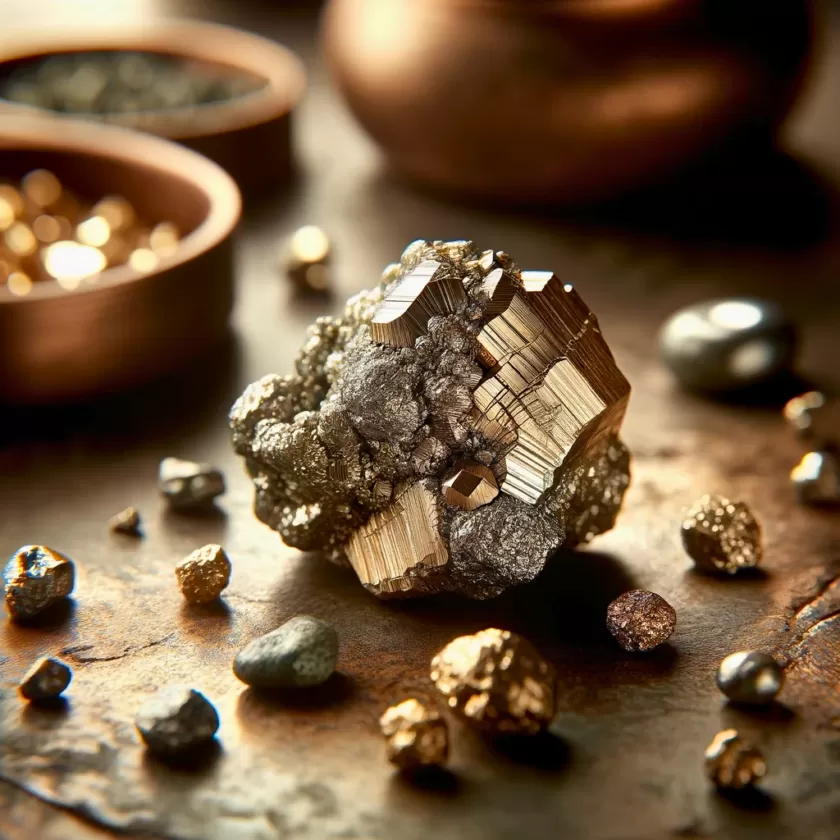
With its metallic sheen and golden appearance, Pyrite is an iron-rich crystal that risks rusting and losing its sparkle when exposed to moonlight’s condensation.
The crystal’s susceptibility to night-time temperature fluctuations can promote fracturing, compromising its aesthetic and energetic attributes. Charging it through earth energy or alongside more robust crystals is preferable to maintain Pyrite’s properties, avoiding moisture-laden environments effectively.
Lapis Lazuli
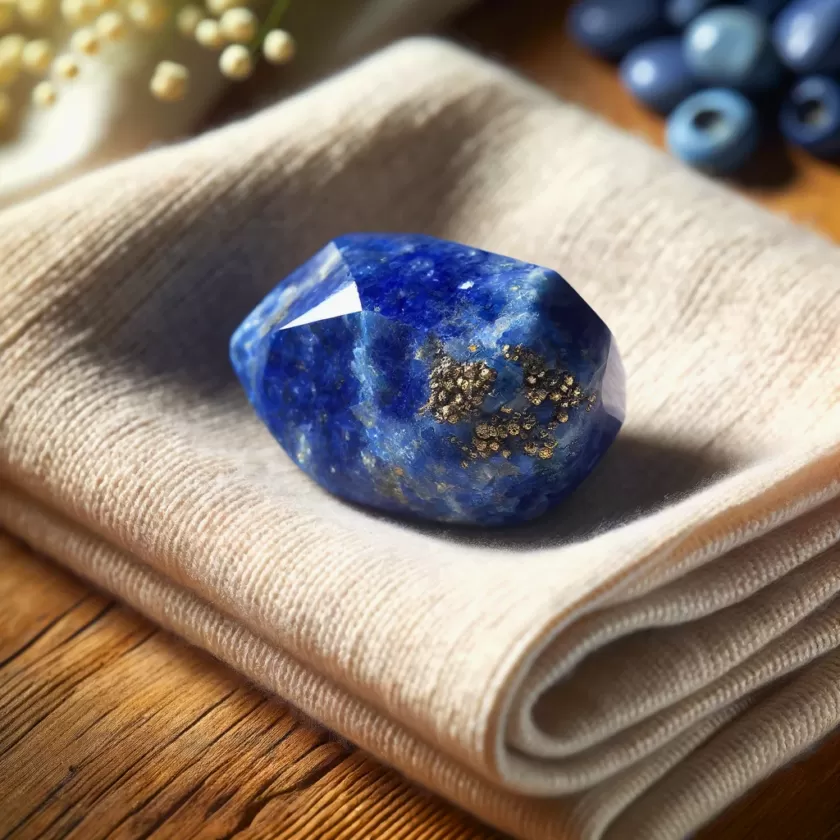
Lapis Lazuli, a stone revered for its deep blue hue and pyrite flecks, is sensitive to water and harsh climatic conditions, making it unsuitable for moonlight charging due to potential condensation exposure and temperature fluctuations at night.
Prolonged exposure to the moon’s rays can cause Lapis Lazuli to fade, losing its vibrant color and diminishing its spiritual properties linked to intuition and psychic abilities. Instead, Lapis Lazuli benefits from being cleansed and charged in generally safe, dry environments, using methods like smudging with palo santo or placing it alongside other crystals that do not adversely interact with lunar energies.
Amber
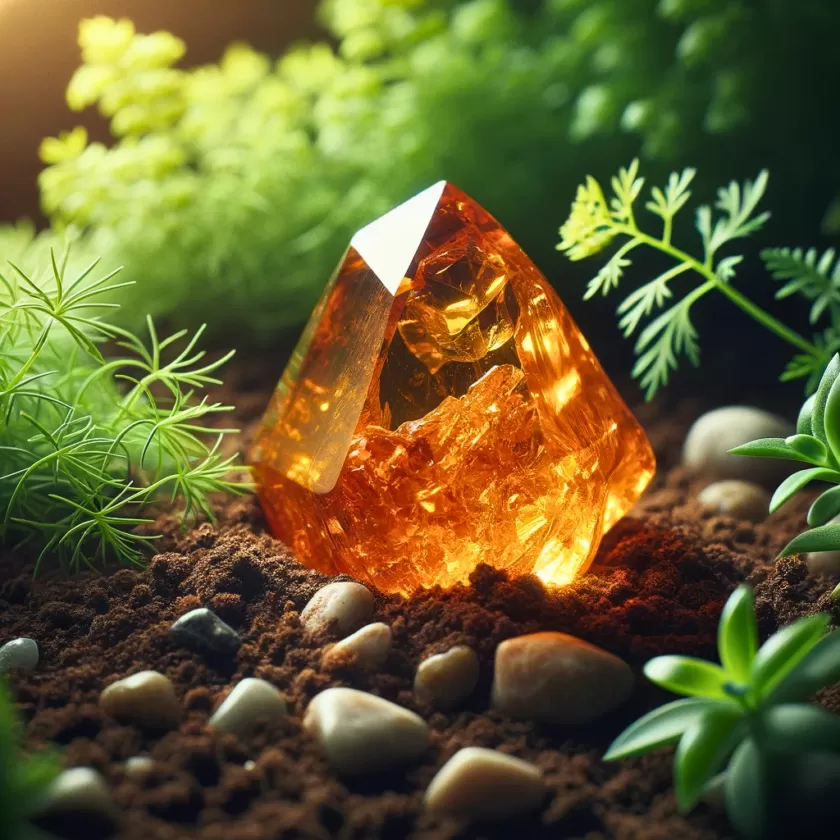
Amber, an organic gemstone formed from fossilized tree resin, is highly susceptible to damage from prolonged exposure to moonlight, which can promote cracking and loss of its warm, positive energy.
The delicate nature of Amber, often used for healing and protective purposes, requires it to be kept away from environments with excessive condensation or temperature variations, common during moonlight charging. To keep Amber’s energetic properties and physical integrity, it is advisable to use alternative charging methods such as burying it in soil, exposing it to gentle sunlight for short periods, or utilizing a singing bowl’s vibrations.
Hematite
Hematite, known for its metallic sheen and grounding properties, is prone to rusting when exposed to the condensation commonly associated with nighttime dew during moonlight charging.
This iron-rich stone, often used for its protective and stabilizing energy, can suffer structural damage and lose its luster if left under the moon’s rays for extended periods. Charging Hematite effectively involves keeping it in dry conditions, away from direct moonlight, and using alternative methods like placing it on a natural surface or in a dry, indoor space to preserve its physical and energetic qualities.
Kyanite
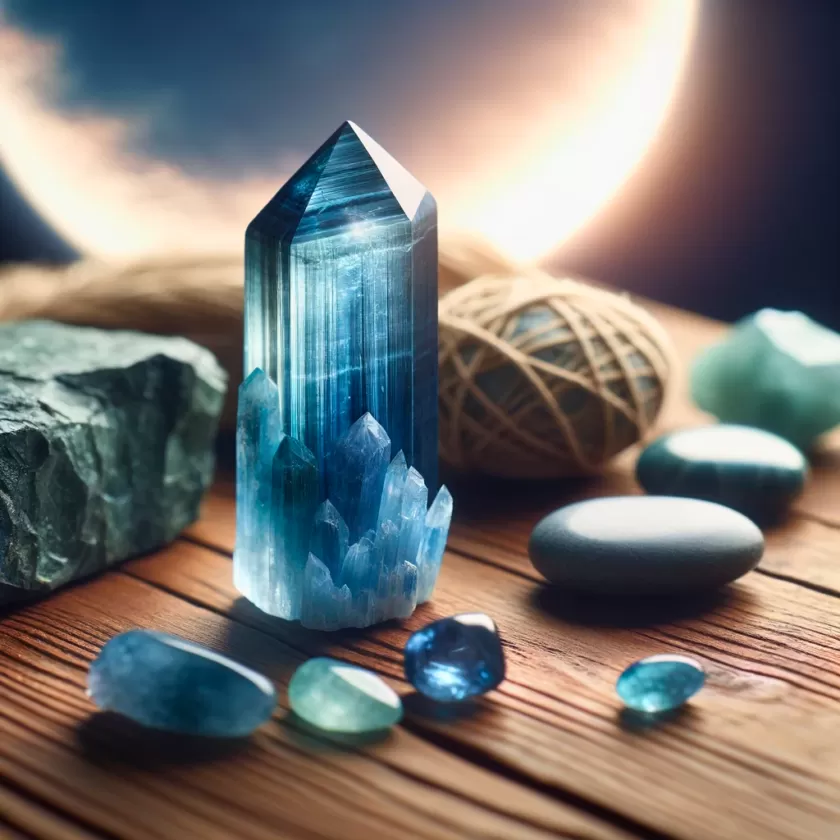
Kyanite, known for its alignment properties and rapid energy transfer, is a unique crystal that doesn’t accumulate or retain negative energy, making traditional moonlight charging unnecessary.
Its inherent stability means that Kyanite maintains its energetic balance without the need for cleansing or charging in lunar energy, unlike many other crystals. For Kyanite, simply placing it in a serene environment or alongside other crystals can amplify energy, negating the need for exposure to moonlight overnight, which could potentially damage its delicate structure.
Sodalite
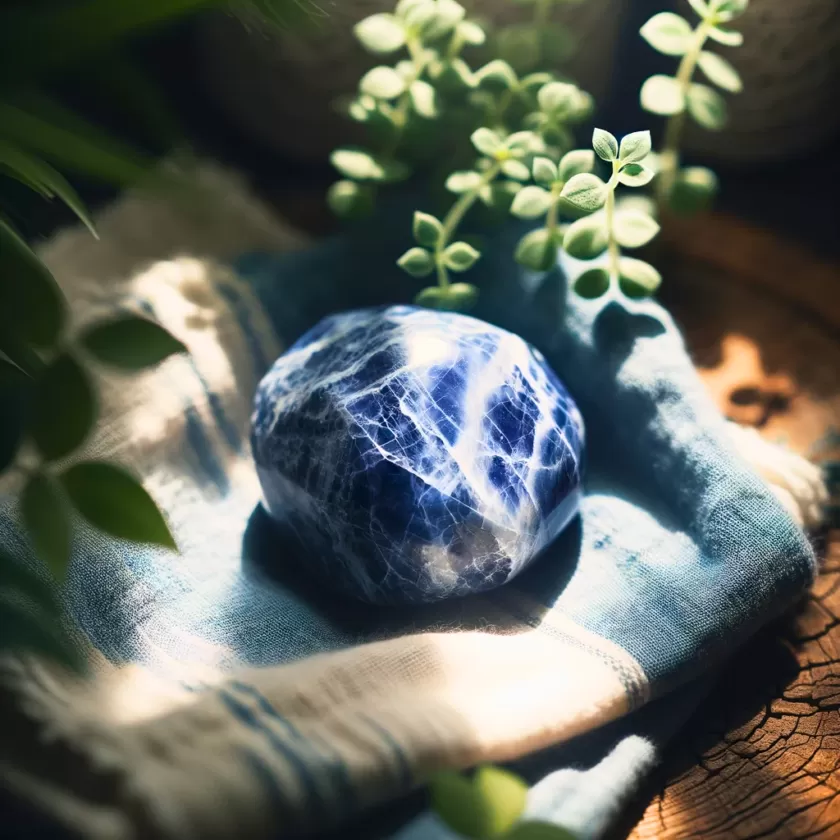
With its deep blue hue and ability to enhance intuition, Sodalite is a delicate crystal that can fade and lose its clarity when exposed to the powerful energy of direct moonlight.
This crystal is better suited to charging methods that don’t involve strong lunar exposure, as prolonged moonlight can alter its chemical composition and weaken its metaphysical properties. To continue Sodalite’s effectiveness in spiritual practices, it’s recommended to effectively charge it in shaded, natural environments or using other methods like sound vibrations, preserving its vibrant color and psychic abilities.
Opal
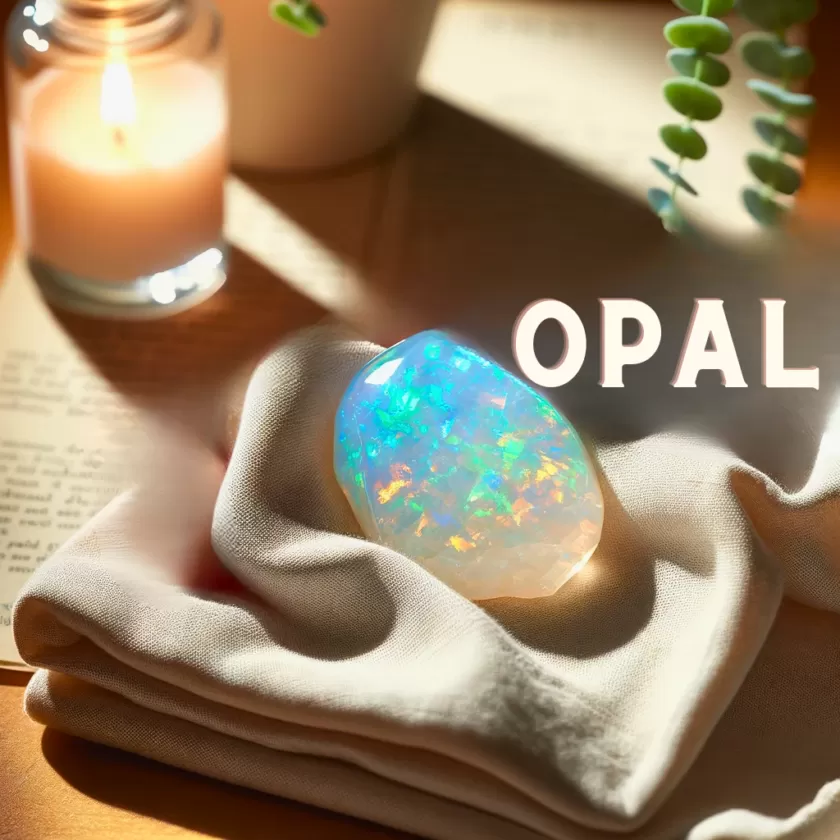
Opal, a precious stone known for its iridescent play-of-color and emotional healing properties, is highly sensitive to sudden temperature changes and condensation, making moonlight charging potentially harmful.
The delicate nature of Opal, prone to cracking and losing its luster under extreme conditions, requires careful handling and avoidance of the strong lunar energies and moisture associated with moonlight. For charging Opals, the use of soft, indirect light or the earth’s grounding energy is preferred to protect its fragile structure and enhance the benefit of its natural soothing energy without risking damage from the moon’s energy.
Turquoise
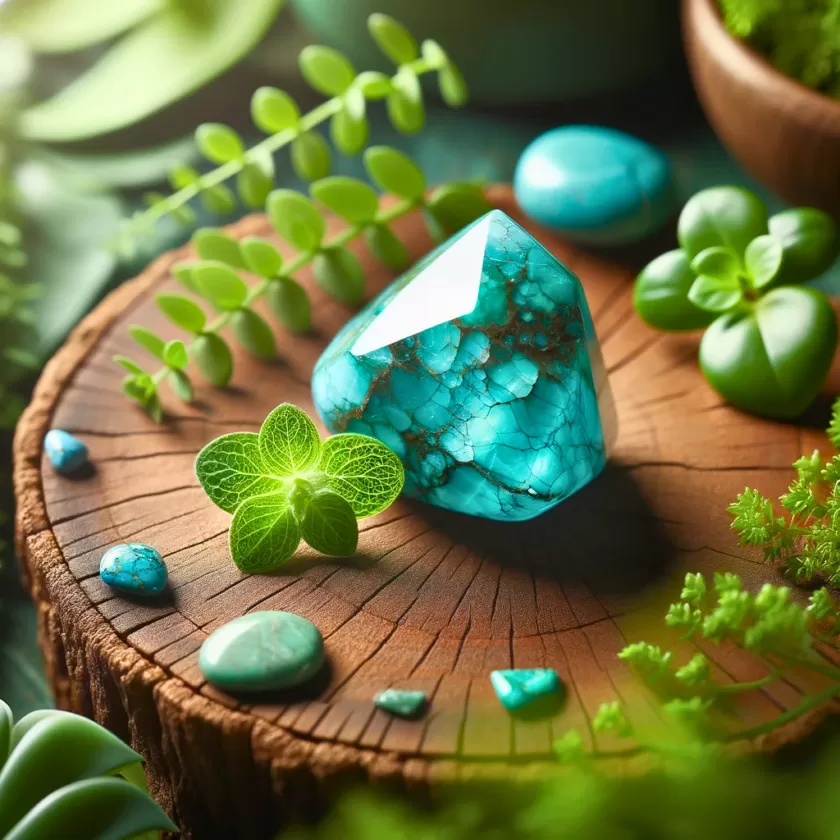
Turquoise, a precious crystal prized for its vibrant blue-green color and protective qualities, is particularly vulnerable to fading and losing its energetic potency when exposed to full moon charging.
The full moon’s energy can be too overwhelming for this soft crystal, causing it to absorb moisture and potentially release toxic fumes, making moonlight charging unsuitable. Instead of charging crystals in moonlight, placing them on a natural surface or using alternative methods like salt water baths is more effective, preserving their delicate individual properties and ensuring it doesn’t absorb negative energies.
Celestite
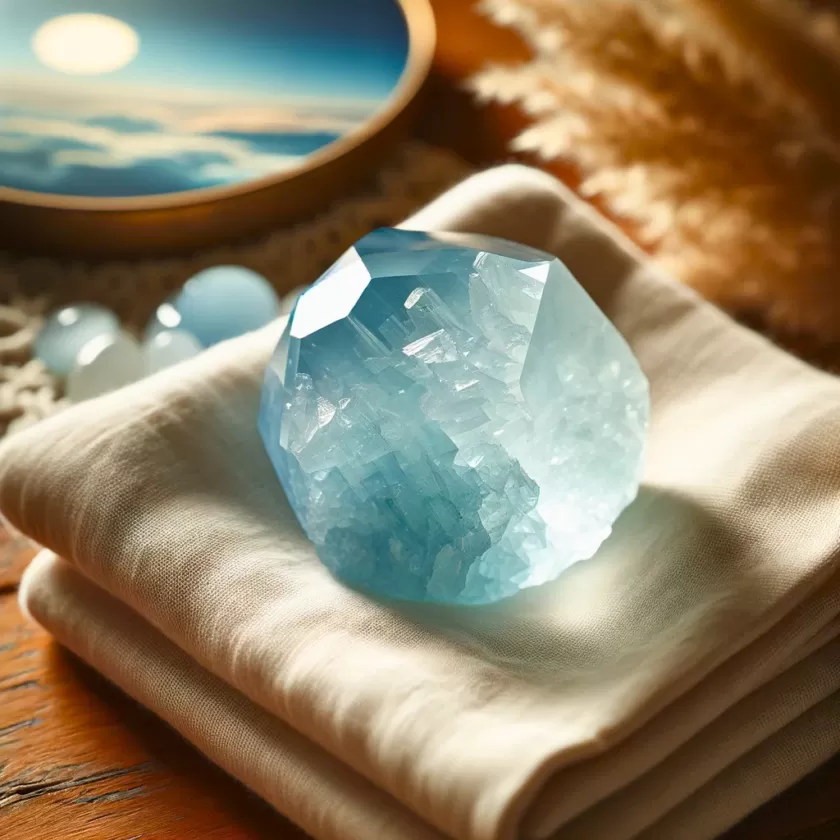
Celestite, known for its gentle blue hues and connection to spiritual realms, is a fragile crystal that can crack easily under the intense lunar energy of moonlight charging, particularly during the full moon.
This crystal’s delicate structure is not suited for absorbing the full moon’s heightened energy, as it can lead to disintegration or a loss of its calming properties. To maintain Celestite’s purity and enhance its metaphysical properties, charging it in a space with gentle, ambient light or using a singing bowl for energy cleansing and avoiding direct moonlight exposure are recommended.
Moldavite
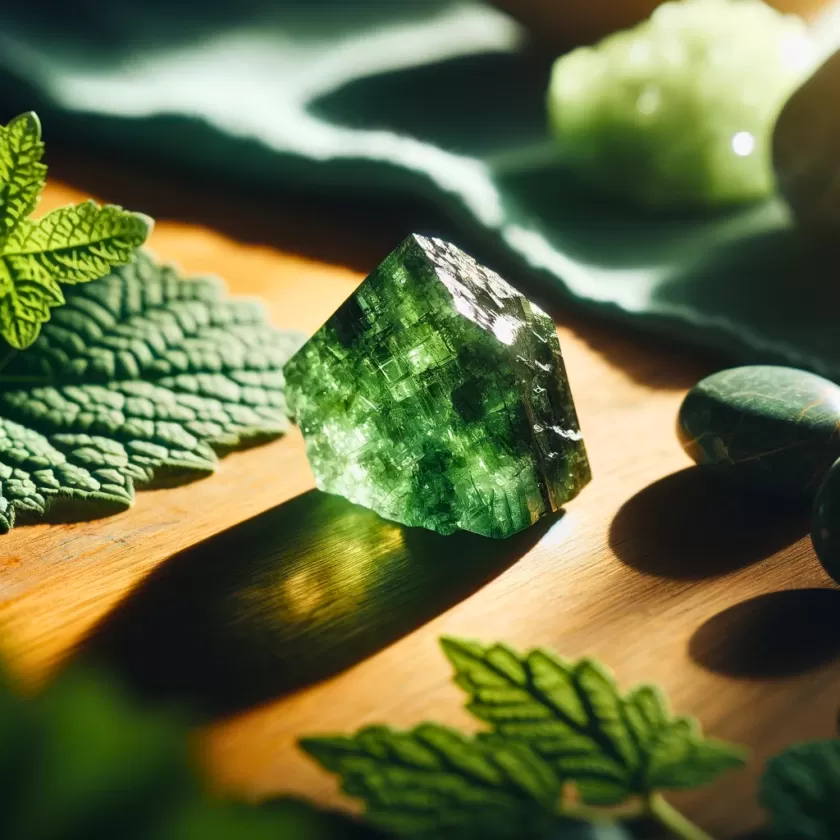
Moldavite, a high-vibrational stone known for its transformative power, can become energetically unstable and lose its effectiveness when exposed to the intense lunar energy of a full moon during moonlight charging.
This fragile crystal, formed from meteoric impacts, is subject to the powerful vibrations of the moon’s light, which can overwhelm its natural energy pattern and lead to energetic dissonance. Charging Moldavite effectively involves avoiding direct moonlight exposure, especially during the full moon, and instead using methods like meditation or placing it in a location that aligns with the cardinal directions to enhance its energetic potential without the risk of moonlight interference.
Fluorite
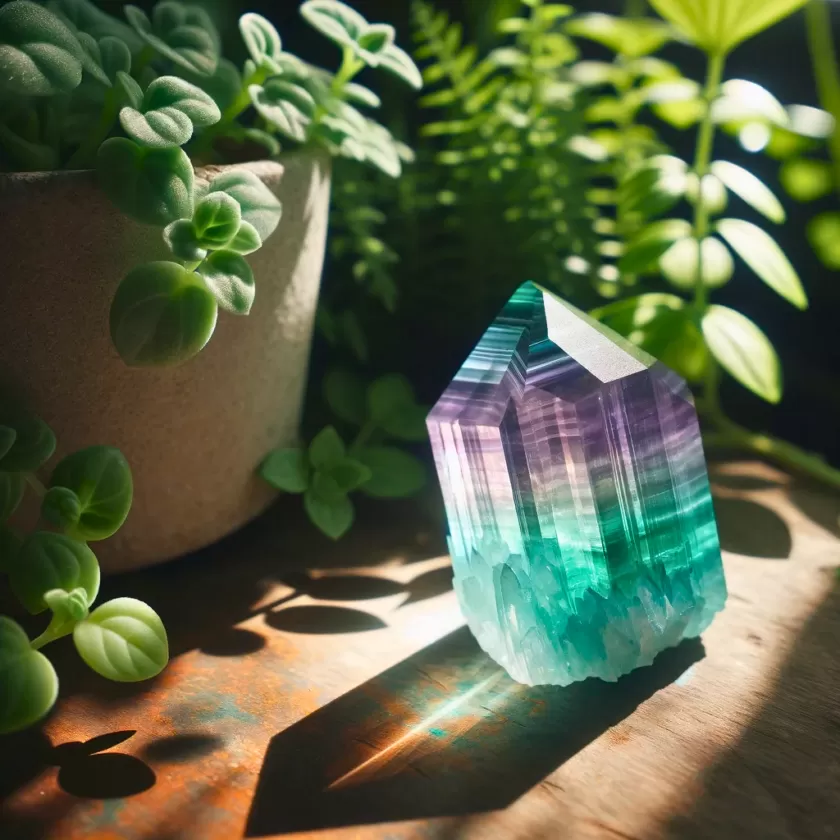
Fluorite, known for its vibrant colors and ability to enhance mental clarity, is a highly sensitive crystal that is known for losing color and energetic properties when exposed to direct lunar rays during moonlight charging.
The fluctuating energy of the full moon can destabilize Fluorite’s structure, leading to a weakening of its ability to absorb and neutralize stagnant energies, which is crucial for its use in crystal healing. To maintain Fluorite’s vibrancy and metaphysical attributes, it’s advised to charge it in a stable environment, such as on a natural surface or through methods that don’t expose it to the extreme energy of moonlight, like using a chrysanthemum stone for indirect energy transfer.
Azurite

With its deep blue hues and powerful connection to intuitive and psychic development, Azurite is extremely vulnerable to fading and energetic distortion when charged under the moonlight, especially during a full moon.
The strong lunar energy can alter Azurite’s delicate crystalline structure, diminishing its capability to facilitate spiritual connection and enhance its psychic capabilities. For effective charging, Azurite benefits from gentle cleansing methods that avoid direct lunar exposure, such as placing it on the grass under indirect light or using the harmonizing energy of rose quartz, ensuring its energetic purity and color retention.
Imperial Topaz
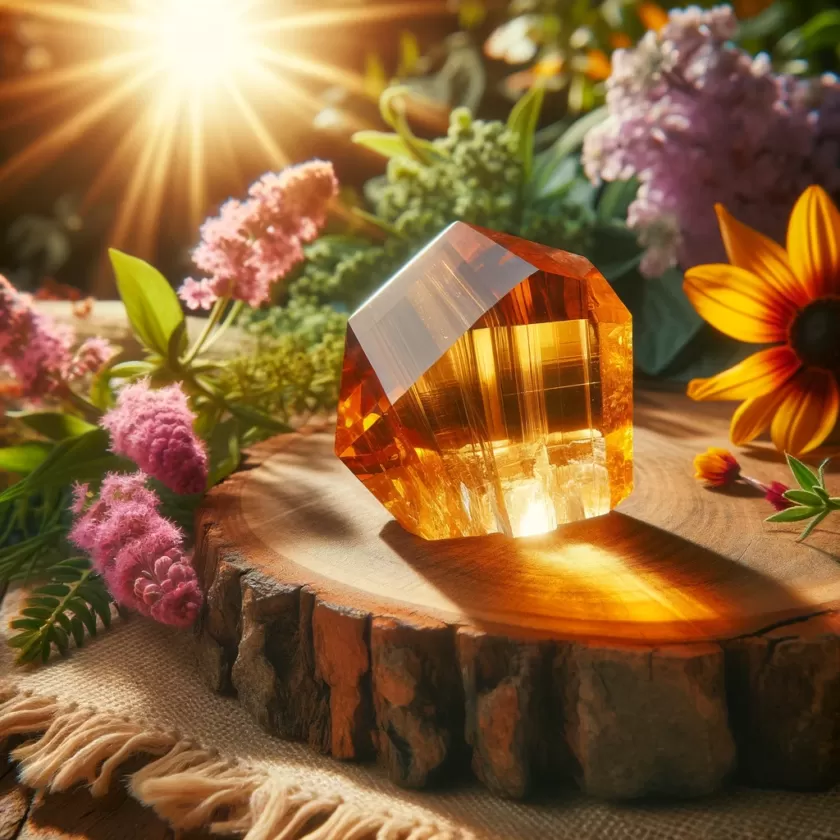
Imperial Topaz, a precious crystal known for its lustrous golden-orange color and capability to attract abundance, can become energetically overwhelmed and physically damaged if exposed to moonlight charging, particularly during the waxing or full moon phases.
The potent moonlight energy can interfere with Imperial Topaz’s natural vibrational frequency, reducing its capacity to amplify positive energy and aid in manifesting spiritual practices. To preserve and improve the new beginnings of Imperial Topaz, charging it in direct sunlight for a short exposure of a few hours or on a natural surface away from the fluctuating energies of the moon is more suitable, allowing it to retain its magic and healing properties.
Other Effective Charging Methods for Sensitive Crystals to Remove That Negative Energy
- Sunlight Charging: Sunlight charging harnesses the potent energy of the sun to revitalize most crystals, making it a popular method for those like clear quartz(master healer) and amethyst, which thrive under solar illumination. By placing certain crystals in direct sunlight for a few hours, they absorb the sun’s vibrant energy, enhancing their inherent traits and amplifying their capability to support personal transformation and spiritual practice. However, not all crystals enjoy the sun’s energy; it’s important to be mindful of the duration and intensity of sunlight exposure, as too much sunlight can cause certain delicate crystals, such as amethyst, to fade in color or become energetically overcharged.
- Burying in Soil: Burying protective crystals in the soil allows them to reconnect with the earth, enabling a natural, grounding method of recharging. This method is especially appropriate for grounding stones like black tourmaline and red jasper. The earth’s energy helps to cleanse the crystals of bad energy and realigns them to their natural vibration, promoting a sense of balance and energetic renewal. It’s advisable to mark the spot where the crystal is buried to avoid losing it and to leave it for a period that feels intuitively right, usually ranging from a day to a week.
- Sound Cleansing with a Singing Bowl: Using a singing bowl for cleansing is an effective method to recharge crystals without exposing them to the elements. This method is ideal for soft crystals that are fragile to water and sunlight, like selenite. The vibrations from the singing bowl resonate with the crystalline structure, helping to clear any accumulated negative energy and renew the crystal’s natural frequency. This technique is beneficial for collectively cleansing several crystals simultaneously, as the acoustic vibrations can envelop multiple precious stones, making it a time-efficient crystal charging method.
- Running Water: Cleansing crystals under running water is a traditional method that utilizes the purifying properties of water to wash away any stagnant energy. It’s suitable for hardy crystals like quartz and jasper, but one should avoid putting soft or soluble crystals, such as halite or selenite, in water as they can dissolve or damage. This method connects the crystals to the flow of natural energy, which is especially effective when using natural sources like a stream or river, but tap water can be used as a convenient alternative. You can also use the rain as well!
- Smudging: Smudging with sage or palo santo is a ritualistic way to cleanse and recharge crystals, especially beneficial for those used in healing and protection, like rose quartz and labradorite. The smoke from these sacred herbs is believed to clear negative energies and restore the crystal’s original vibrational state, enhancing its crystal’s properties. This method recharges the crystals and connects them to ancient purification and spiritual alignment practices, making it a deeply meaningful charging process.
- Visualization and Set Intentions: Visualization and intention setting is a personal and introspective method for charging crystals, particularly suitable for those linked with intuition and manifestation, such as citrine and moonstone(known for feminine energy). By holding the crystal and focusing on specific intentions or desired outcomes, one’s personal energy is transferred to the crystal, aligning it with these goals. This method emphasizes the importance of the connection between the individual and the crystal, making it an excellent tool for personal growth and aligning the crystal’s energy with one’s own intentions.
Summary of Crystals That Cannot Be Charged in Moonlight
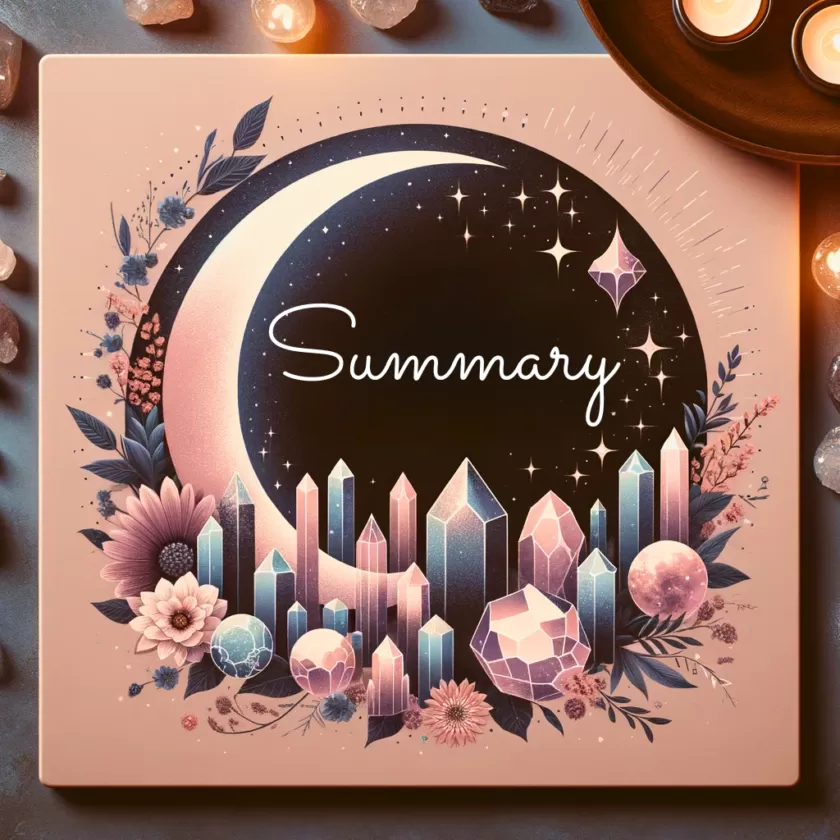
In the twinkling realm of crystal care, the moonlight charging soirée isn’t a universal jam, especially for those crystals that need a different kind of glow-up. It’s essential to remember that while moonlight can amplify and cleanse many stones, it’s not the one-size-fits-all for charging crystals – some, like halite, can’t handle the lunar limelight without losing their cool.
So, as we close the curtains on this lunar lesson, keep a window open to other alternatives to charge crystals that resonate more harmoniously with your body and crystal companions, ensuring they reach their full potential in life without any celestial side effects.
Frequently Asked Questions
Which crystals cannot be together?
Certain crystals, like clear quartz and amethyst, should not be paired with stones like black tourmaline or halite, as their energies may conflict or negate each other’s properties. For example, clear quartz amplifies energy, which might overwhelm the grounding effect of black tourmaline, or more robust crystals could compromise the moisture sensitivity of halite.
How do you cleanse crystals in the moonlight?
To cleanse crystals in the moonlight, place them on a natural surface or a windowsill where they can receive direct moonlight, preferably during the total moon or waxing moon phase, for enhanced purification. This method lets the moonlight energies gently cleanse the crystals, removing any stagnant energies and recharging them with the moon’s revitalizing power.
What crystals should you avoid sleeping with?
It’s advisable to avoid sleeping with crystals like clear quartz or citrine, as their energizing properties can disrupt sleep patterns and cause restlessness. Instead, opt for soothing crystals like amethyst or moonstone, which promote relaxation and align better with the body’s needs during rest.
Which crystals should not be kept in the bedroom?
Crystals with high energy levels, such as citrine or quartz, may disrupt sleep patterns due to their stimulating properties and should ideally not be kept in the bedroom. Additionally, crystals known for absorbing negative energy, like black tourmaline, might retain too much residual energy, potentially affecting the peaceful ambiance required for rest.
Can all crystals go in moonlight?
Not all crystals are suitable for moonlight charging; delicate crystals like selenite or a crystal containing lead, such as galena, can be damaged by condensation and temperature changes at night. It’s important to research specific crystals’ properties, as some may require alternative charging methods, like burying in soil or using indirect sunlight.
How long should crystals charge in moonlight?
The optimal duration for charging crystals in moonlight is typically from dusk to dawn, allowing them to absorb the moonlight energy throughout the night. However, a few hours under the moon’s light, especially during a full or waxing moon, can be sufficient for most stones to cleanse and recharge effectively.
How long do crystals need to stay in moonlight?
Crystals generally require several hours under the moonlight to be successfully charged, with many practitioners preferring to leave them overnight to soak up the lunar energy. The duration in which crystals can be charged will vary based on personal preference and the specific crystal properties; for instance, a more delicate crystal may need less time to avoid potential damage from environmental exposure.
What is the best night to charge crystals?
The best night to charge crystals is typically during a full moon, as its energy is at its peak, offering the most potent cleansing and charging potential for a wide range of crystals. However, the intentions set and the specific needs of the crystal can also make the nights of a new moon or waxing moon suitable for charging, aligning with new beginnings and growth energy.
Can you charge crystals under a waning moon?
Yes, you can charge crystals under a waning moon, especially for intentions related to release, letting go, or clearing bad vibes. The waning moon phase is considered a time of decrease and purification, making it appropriate for charging crystals that support cleansing, introspection, or emotional healing.
Can you put halite in water?
You should avoid putting halite in water, as this delicate, salt-based crystal is highly susceptible to dissolving upon contact with moisture. This means that submerging or even rinsing halite in water can contribute to its disintegration, stripping away its physical structure and the energetic properties it carries, underscoring the importance of steering clear of water-based cleansing for this specific crystal.
Is the sun or moon better for charging crystals?
The choice between the sun and the moon for charging crystals depends largely on the specific type of crystal and the intention behind the charging. Sunlight, with its fiery and purifying energy, is great for crystals like carnelian and labradorite, enhancing their manifestation and protective properties, while the moon’s gentle, reflective light is ideal for crystals like moonstone and selenite, aligning with their crown chakra energies and providing a more subtle, yin-type recharge.
How do you recharge Amethyst crystals?
Amethyst, linked to the crown chakra and intuition, are best recharged by placing them under moonlight, where they can absorb the moon’s calming and purifying energies without the risk of color fading caused by sunlight. Alternatively, these crystals can be cleansed and recharged by burying them in the earth for a short period, harnessing the grounding energies of the soil, or placing them near other charged crystals, like rose quartz or clear quartz, to amplify their natural properties.
